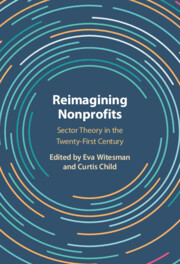Part I - Overviews
Published online by Cambridge University Press: 11 January 2024
Summary

- Type
- Chapter
- Information
- Reimagining NonprofitsSector Theory in the Twenty-First Century, pp. 15 - 88Publisher: Cambridge University PressPrint publication year: 2024

